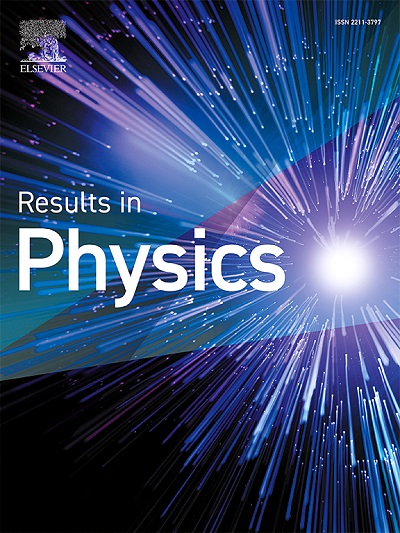On new regular quadratic Gaussian black hole: Photon sphere, shadow and gravitational lensing
IF 4.4
2区 物理与天体物理
Q2 MATERIALS SCIENCE, MULTIDISCIPLINARY
引用次数: 0
Abstract
Gaussian black holes constitute an important class of regular black holes, characterized by their spherically symmetric and static nature. These solutions emerge from the framework of Einstein’s equations, particularly when incorporating the effects of the cosmological constant, which plays a crucial role in the overall dynamics of the universe. By examining the null geodesics, we have sought to elucidate the form of the shadow generated by an innovative regular pure quadratic Gaussian black hole. This study contributes to the broader discourse on black hole physics and the implications of their unique structures on observable phenomena. A comprehensive study has been undertaken to explore the relationship between black hole shadows and the configuration of the event horizon, focusing on the impact of Gaussian distribution and black hole mass. The findings of this research contribute to a more nuanced comprehension of how these variables influence the properties of the horizon, the photon sphere, and the effective potential associated with black holes. In addition, our study delves into the effects of gravitational lensing produced by a quadratic Gaussian black hole. The findings demonstrate how variations in the black hole’s parameters can alter several observable characteristics associated with the gravitational lensing effect.
求助全文
约1分钟内获得全文
求助全文
来源期刊

Results in Physics
MATERIALS SCIENCE, MULTIDISCIPLINARYPHYSIC-PHYSICS, MULTIDISCIPLINARY
CiteScore
8.70
自引率
9.40%
发文量
754
审稿时长
50 days
期刊介绍:
Results in Physics is an open access journal offering authors the opportunity to publish in all fundamental and interdisciplinary areas of physics, materials science, and applied physics. Papers of a theoretical, computational, and experimental nature are all welcome. Results in Physics accepts papers that are scientifically sound, technically correct and provide valuable new knowledge to the physics community. Topics such as three-dimensional flow and magnetohydrodynamics are not within the scope of Results in Physics.
Results in Physics welcomes three types of papers:
1. Full research papers
2. Microarticles: very short papers, no longer than two pages. They may consist of a single, but well-described piece of information, such as:
- Data and/or a plot plus a description
- Description of a new method or instrumentation
- Negative results
- Concept or design study
3. Letters to the Editor: Letters discussing a recent article published in Results in Physics are welcome. These are objective, constructive, or educational critiques of papers published in Results in Physics. Accepted letters will be sent to the author of the original paper for a response. Each letter and response is published together. Letters should be received within 8 weeks of the article''s publication. They should not exceed 750 words of text and 10 references.
 求助内容:
求助内容: 应助结果提醒方式:
应助结果提醒方式:


